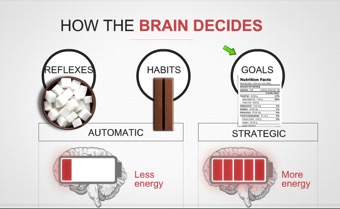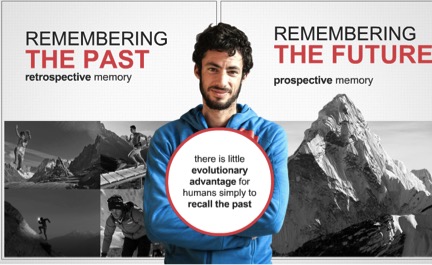During a recent webinar hosted by Adobe Connect in partnership with Dr. Carmen Simon, Ph.D and author of ‘Impossible to Ignore: Creating Memorable Content to Influence Decisions’, strategies to create memorable and actionable virtual sessions were discussed. Carmen’s innovative approach uses neuroscience to align business content more closely to human’s cognitive decision-making processes and illicit behavioral change.
Dr. Simon covered examples of how to progress one’s content from good, to better, to impossible to ignore. The strategies, rooted in neuroscience research, included design tactics that lead to increased memorability and recall. While a seemingly basic central premise on the surface, Dr. Simon posited that to become impossible to ignore one must become memorable. By methodically examining how memorability is formed, Dr. Simon helped guide attendees through what is in fact a highly multidimensional thesis in three key takeaways.
Takeaway #1:
Modern scientific research in the field of neuroscience has led us to understand that the brain’s decision making processes is rooted directly in memory. These findings also show that all decisions are made using reflexes, habits, and goals as core points of reference. Content designers’ ability to become impossible to ignore hinges on whether they can relate and draw connections along their audiences’ values in these three decision-making dimensions.
Important to also bear in mind is the incremental amount of mental capacity required to elicit responses in these differing dimensions. While the ultimate purpose of a campaign or presentation might be to reframe the goals of a specific audience, content designers must first consider ways to prime ‘low energy’ decisions around the reflexes and habits that will help shape an audience’s said goal.
Takeaway #2:
Recent findings in the field of memory now show it to be the main means through which humans are able to keep track of not only past events (retrospective memory), but also events that might require a decision in the future (prospective memory). In our busy daily lives we are faced with the constant demand of striking a balance between considering historical events and possible future outcomes.
It has been shown that current and unfulfilled goals are those that hold the greatest impact on human’s motivation levels. Thus, the most adept content designers and presenters will enable their audience to make decisions about the future that have the greatest likelihood of increasing a desired outcome. Doing so demands a careful content blend that elicits both retrospective and prospective memories associated with the reflexes, habits, and goals attached to the decisions in hopes of an eventual outcome.
Takeaway #3:
Also important to consider, and rigorously analyzed during Carmen’s presentation, are content techniques that depend dually on complexity of information and time spent between initial exposure to a concept and the ultimate affiliated decisions.
Most content designers fall victim to placing too much emphasis on how their information will be received in the here and now, and not enough on the ways it will nudge and prime an audience for future decisions. A statistic that is shocking in the moment, but so specific that it is unlikely to be recalled in the future is a good example of this. Content designers must be as cognizant of their information’s immediate impact as they are of its role in priming and influencing future action and decision.
The full presentation will help those in the fields of eLearning, webinars, and virtual presentations translate these biological norms in to immediately actionable content design strategies.
Access it here via Adobe Connect.
Wondering what to read next? Here are a few suggestions:
Four Interactive Agenda Ideas for New Webinar Presenters
Webinars, Attention and Memory: What Marketers Can Learn from Teachers



